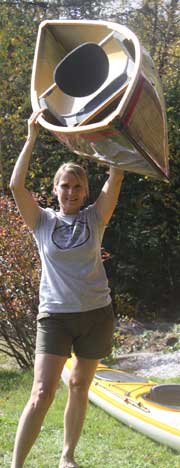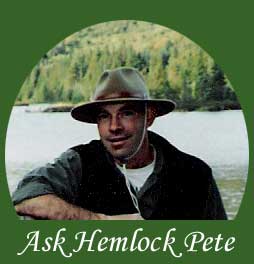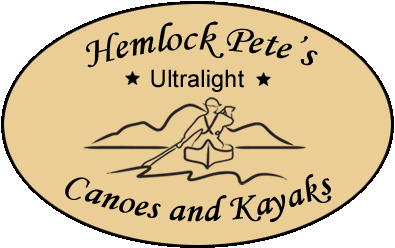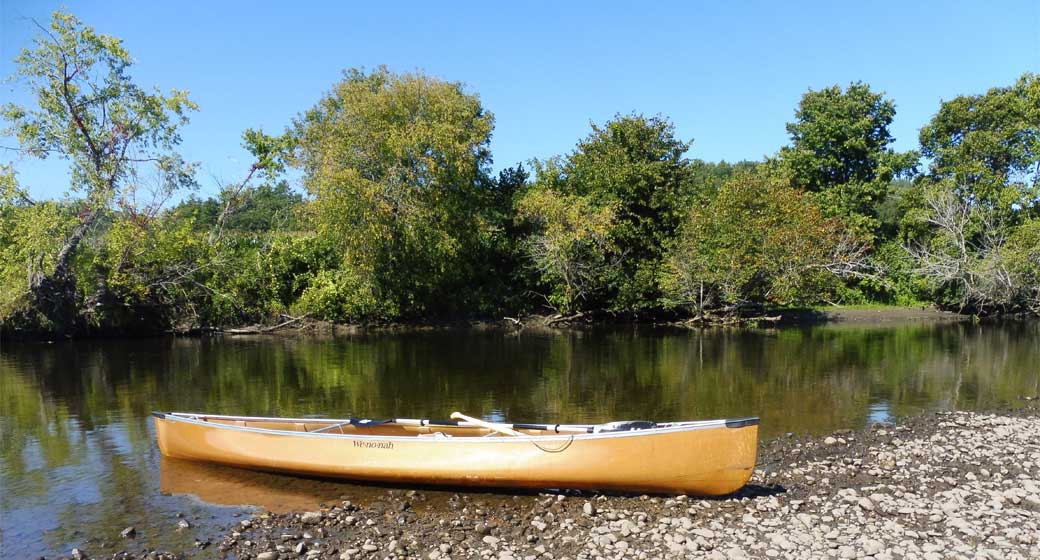




![]() Ultralight boats!
Ultralight boats!
Paddles
A discussion on paddles can become incredibly in depth and draw up many emotions and prejudices among paddlers. So before I get too far I would like to make one comment. Just remember this simple rule. Pick up a paddle, hold it in your hands and if it feels good, use it. Nothing else really matters.
Paddles come in a wide range of sizes and materials. Again the type of paddling you do and the amount of money you are willing to spend will help determine the paddle you choose. An ultra light 8 oz graphite paddle can be yours for around $250 or for $10 you can purchase a department store special. A good reliable paddle can be had for $30 - $80.
The materials used are basically the same ones used in the construction of the hulls. Wood, plastic, fiberglass, aluminum, carbon fiber, etc. Their characteristics hold true as well. Those being weight, durability, stiffness and price. The one exception is wood. Wooden paddles cover the entire spectrum from heavy weight cheap ones to ultra-light expensive models.
The first thing we need to know about paddles is what length it should be. This is a loaded question. Stroke rate, water conditions, and personal preference are just a few of the variables. A very basic starting point would be as follows. While sitting in your canoe in the water measure from your nose to the water surface. This is the length of the shaft. Add on the blade which will generally be between 1 and 2 feet and you have the overall length of your paddle. The next item to consider is the blade. How wide and what shape. Here are some basic guidelines. The average blade width is 6-7". The wider the blade the more purchase or bite you will have in the water. This is important as you pull the canoe through the water. However, as you increase the blade width you increase the power requirements needed to use it. Blade shapes tend to be either rounded or squared. Some are short and fat, others are long and slender. If you like smooth, quiet paddling I would suggest a narrower round blade. If you are into a more aggressive type of paddling where performance overrides quietness then go with a wider blade with square lines. Another item to consider is camber. This simply put is the tapering of the blade from its center towards the edges and tip. A cambered blade is quieter and offers better control when slicing it through the water while performing advanced strokes. Some blades have camber, some do not. A completely flat blade has more purchase.
Paddle shafts are round or oval and either straight or bent. The choice is your. Most of the paddles you have been exposed to have probably been straight shaft. If you have seen a bent shaft paddle you probably thought it looked pretty weird. Well at first glance they do, but as weird as they may seem they perform very well, especially when covering long distance. Modern marathon racers like to take credit for this invention but I believe the Canadian Voyagers have that honor along with the sit and switch paddling style used with them. (I will go into more detail in another article)
The paddle grip is the last item to consider. For those of you who do not know, this is located on top of the shaft. Styles, sizes and shapes cover a wide range the most common being the pear and "T" grips. Their names describe them well. The T grip is generally used where precise control is required. The pear is suited more for the general canoeist and will feel more comfortable in the hands of most paddlers.
You can purchase a paddle in a variety of places from Wal-Mart to your local canoe shop. Good ones are hard to find and they do not come cheap. A paddle should be light, but rugged. You should be able to flex it when you lean on it without breaking it. Above all else it should feel comfortable in you hands.
Until next time. HAPPY PADDLING!!!

Have a question? I'm happy to answer it - just email me at hpcanoes@gmail.com
![]()
hpcanoes@gmail.com
603.667.5112

We specialize in ultralight solutions and offer expertise in canoes and Wee Lassie boats, as well as all the related equipment. Our favorites are Wenonah canoes and Wee Lassie boats. Although we will work with any material we like to get folks set up with lightweight canoes so you can dedicate your time to the joy of being out on the lakes and rivers instead of struggling to move your boat between car and water.
Scott Edwards, "Hemlock Pete" himself, offers you decades of paddling expertise. He is friendly, down-to-earth, and provides superior customer service. You won't find a better, or more pleasant, deal elsewhere.

